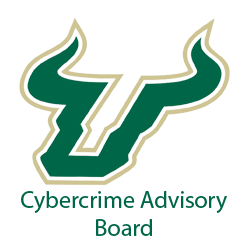
Proving Your Business is Cyber Secure
The importance of cybersecurity cannot be emphasized enough in today’s digital world. Because organizations rely so largely on digital technology and data storage, the risk of cyber assaults has skyrocketed. A successful cyber assault can result in the destruction of sensitive data, financial losses, reputational harm, and even legal action. As a result, it is critical for firms to take steps to demonstrate their cyber security readiness.
Cybersecurity readiness refers to being prepared for, able to endure, and recover quickly from cyber attacks. This includes having the required protections, policies, procedures, and employees in place to detect, protect against, and respond to cyber attacks. Cybersecurity readiness is essential not only for safeguarding sensitive data, but also for building confidence with customers, partners, and stakeholders.
Demonstrating your company’s cyber security readiness might be a difficult undertaking, but it is doable with the appropriate strategy. In this post, we will look at some of the best practices that companies may use to demonstrate their cyber security preparation.
Perform a Risk Assessment for Cybersecurity
A cybersecurity risk assessment is a thorough assessment of the threats to the confidentiality, integrity, and availability of your company’s digital assets. It entails detecting potential threats, vulnerabilities, and hazards, as well as assessing the likelihood and impact of each risk. A cybersecurity risk assessment can assist you in understanding your organization’s cybersecurity posture and developing a plan for improving it.
The risk evaluation should include hardware, software, networks, and data storage as part of your company’s digital infrastructure. It should also examine your company’s rules, procedures, and personnel training programs. An in-house cybersecurity team or a third-party cybersecurity firm can conduct the risk assessment.
Create a Cybersecurity Plan
You should create a thorough cybersecurity plan based on the results of the cybersecurity risk assessment. The plan should detail the exact steps your company will take to mitigate identified risks and secure digital assets. Procedures for reacting to cyber assaults, such as event reporting and investigation, containment, and recovery, should also be included in the plan.
To ensure that everyone understands their role in maintaining the organization’s cybersecurity posture, the cybersecurity plan should be disseminated to all employees and stakeholders. Employees should be subjected to regular training and testing to ensure that they are aware of the most recent cyber risks and how to respond to them.
Create a Security Framework
A security framework is a set of best practices and recommendations for safeguarding digital assets. The National Institute of Standards and Technology (NIST) Cybersecurity Framework, the ISO 27001 standard, and the Payment Card Industry Data Security Standard are among the security frameworks available (PCI DSS).
Putting in place a security framework can assist firms in developing an organized and consistent approach to cybersecurity. It gives a set of standards for measuring and improving your organization’s cybersecurity posture. A security framework also communicates to external stakeholders your company’s commitment to cybersecurity.
Test Your Cybersecurity Defenses on a Regular Basis
It is critical to evaluate your cybersecurity defenses on a regular basis to ensure that they are effective and up to date. Some of the methods used to assess cybersecurity defenses are penetration testing, vulnerability scanning, and social engineering testing.
Penetration testing simulates a cyber attack on your organization in order to find vulnerabilities and gaps in your defenses. The process of screening your organization’s digital infrastructure for potential vulnerabilities is known as vulnerability scanning. The goal of social engineering testing is to deceive employees into disclosing sensitive information or clicking on a harmful link.
Frequent testing aids in the identification and remediation of vulnerabilities before they are exploited by cyber criminals. It also aids in ensuring that personnel are aware of the most recent cyber risks and how to respond to them.
Ensure Regulatory Compliance
Many industries are governed by legislation that require organizations to adhere to strict cybersecurity standards. The Global Data Protection Regulation (GDPR), for example, mandates organizations that collect and process personal data of EU people to implement necessary technical and organizational safeguards. Noncompliance with these standards can result in large penalties and judicial action.
Companies should be aware of the regulations that apply to their business and take the required procedures to ensure compliance. This could include putting in place specific cybersecurity measures, conducting frequent audits, and training workers.
Cyber Hazards Must Be Monitored and Responded To
It is critical to monitor your organization’s digital infrastructure for potential dangers in order to detect and respond to cyber attacks. Setting up a Security Information and Event Management (SIEM) system to collect and analyze security data from diverse sources is required.
A SIEM system can assist you in detecting possible threats in real time and responding to them before they cause substantial harm. It can also assist you in identifying potential vulnerabilities in your cybersecurity defenses and taking the appropriate steps to remedy them.
Audits and assessments should be performed on a regular basis.
Frequent audits and assessments are required to ensure that your organization’s cybersecurity safeguards are effective and current. Internal audits to ensure that your policies and processes are followed, as well as external evaluations to ensure that your cybersecurity posture is in line with industry best practices, are all part of this.
Audits and assessments can assist you in identifying and addressing areas of weakness in your cybersecurity protection. They also convey to external stakeholders your organization’s commitment to cybersecurity.
Finally, demonstrating your company’s cyber security capability is critical for securing sensitive data, preserving consumer trust, and complying with legislation. The recommended practices discussed in this article can assist businesses in establishing a comprehensive cybersecurity posture that defends against cyber threats and communicates to external stakeholders their commitment to cybersecurity. Businesses can demonstrate their cyber security readiness and establish themselves as industry leaders by conducting a cybersecurity risk assessment, developing a cybersecurity plan, implementing a security framework, regularly testing cybersecurity defenses, maintaining regulatory compliance, monitoring and responding to cyber threats, and conducting regular audits and assessments.
Arruda Group Cybersecurity can assist firms in implementing these best practices and strengthening their cybersecurity posture. To learn more about our cybersecurity services, please contact us immediately.




